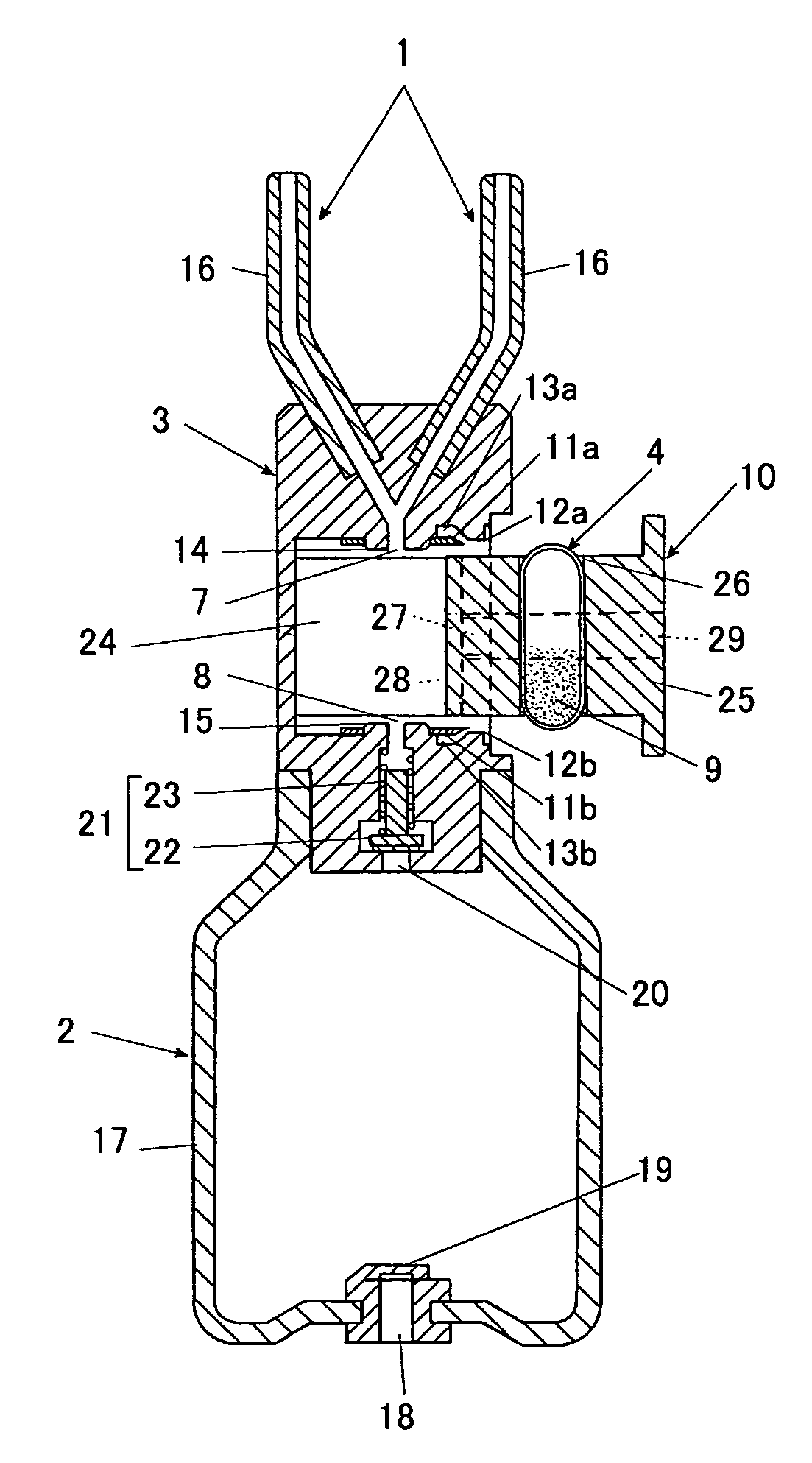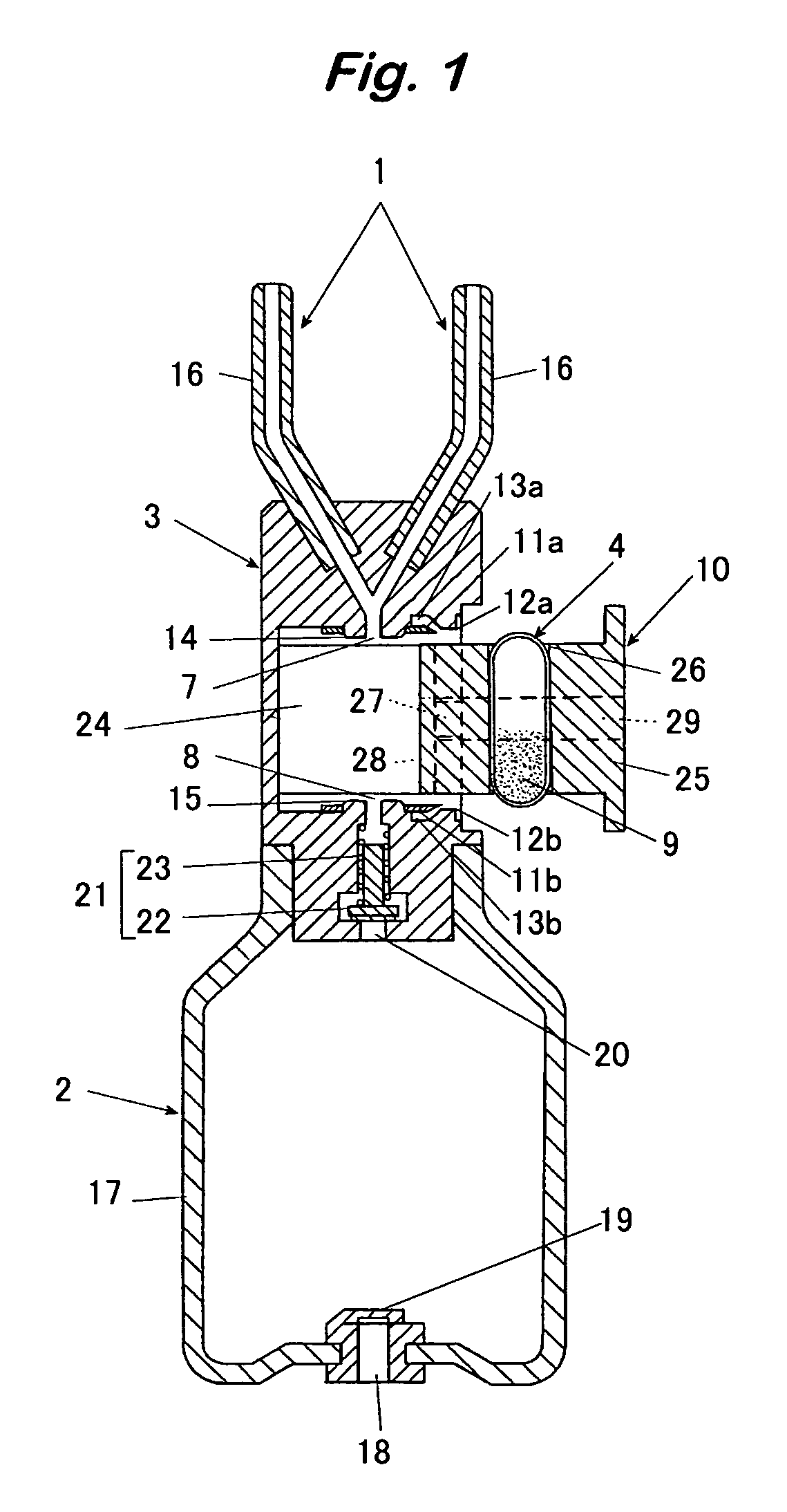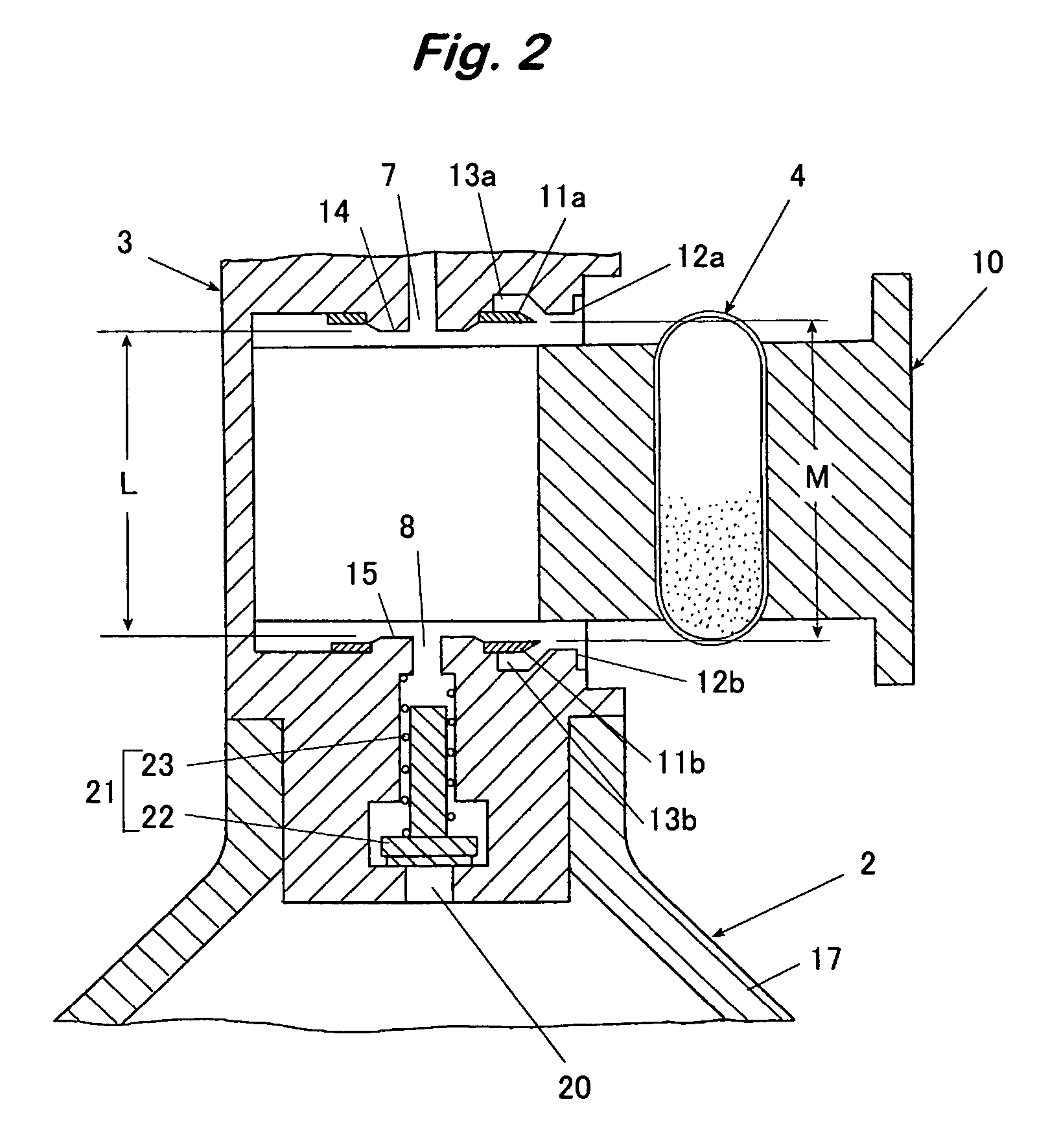Device to deliver a powdery medicine into nasal cavity
a technology of powdery medicine and nasal cavity, which is applied in the direction of infusion syringes, medical insufflators, other medical devices, etc., can solve the problems of not spraying powdery medicine in the capsule, extreme troublesome operation, and not worrying, so as to prevent the variation in the diameter of the hole made, the effect of high accuracy
- Summary
- Abstract
- Description
- Claims
- Application Information
AI Technical Summary
Benefits of technology
Problems solved by technology
Method used
Image
Examples
Embodiment Construction
[0023]In a best mode of the device to deliver a powdery medicine into a nasal cavity according to the present invention, a capsule holder for holding a capsule filled with a powdery medicine slidably in the longitudinal direction thereof and loading the capsule between a connection port on the side of a nozzle of spraying the powdery medicine into the nasal cavity and a connection port on the side of a pump for supplying spray air to the nozzle is placed moveably forward and backward to a loading position of the capsule, a cutter for partially cutting off both ends of the capsule that moves forward to the loading position while being held by a capsule holder to make holes on both ends is placed, a positioning guide is located on this side of the cutter for guiding both ends of the capsule that moves forward to the loading position while being held by the capsule holder and causing the capsule to slide as far as a predetermined position, and the distance between the connection port o...
PUM
 Login to View More
Login to View More Abstract
Description
Claims
Application Information
 Login to View More
Login to View More - R&D
- Intellectual Property
- Life Sciences
- Materials
- Tech Scout
- Unparalleled Data Quality
- Higher Quality Content
- 60% Fewer Hallucinations
Browse by: Latest US Patents, China's latest patents, Technical Efficacy Thesaurus, Application Domain, Technology Topic, Popular Technical Reports.
© 2025 PatSnap. All rights reserved.Legal|Privacy policy|Modern Slavery Act Transparency Statement|Sitemap|About US| Contact US: help@patsnap.com



